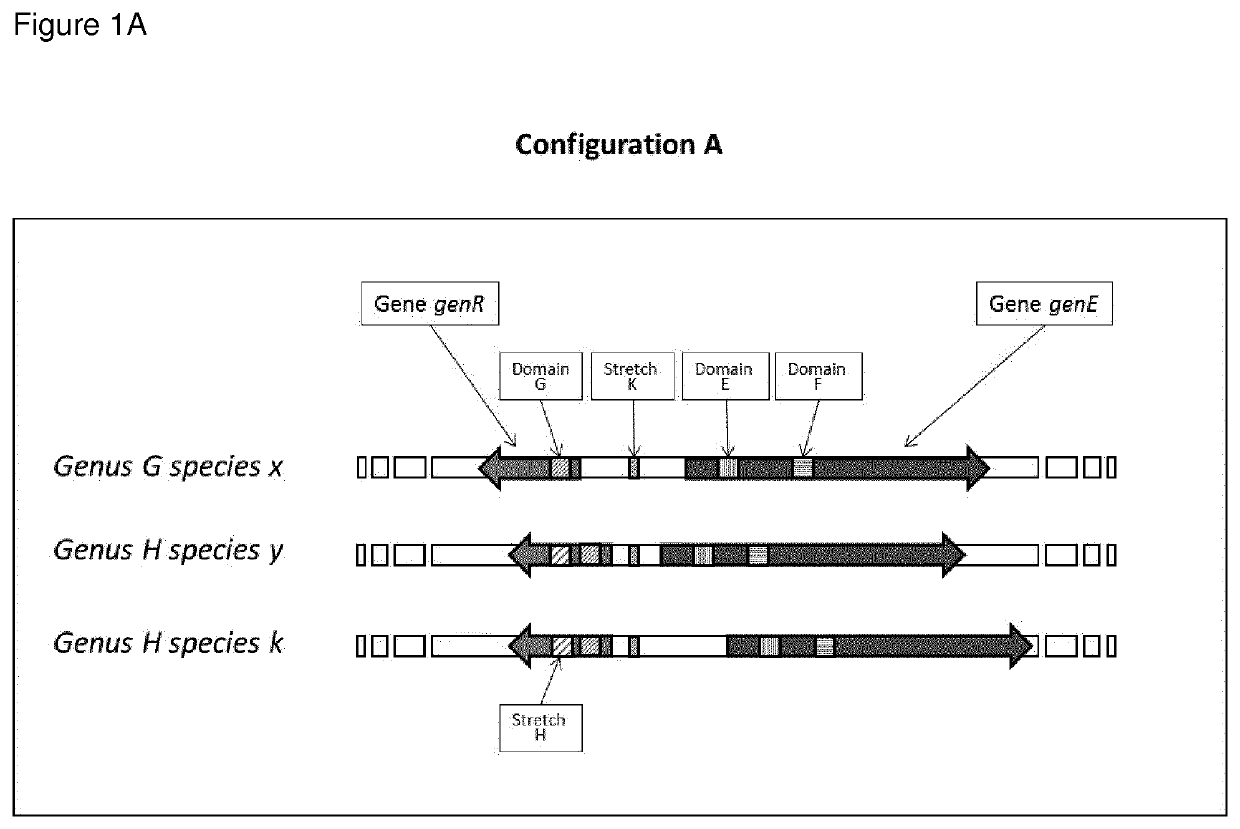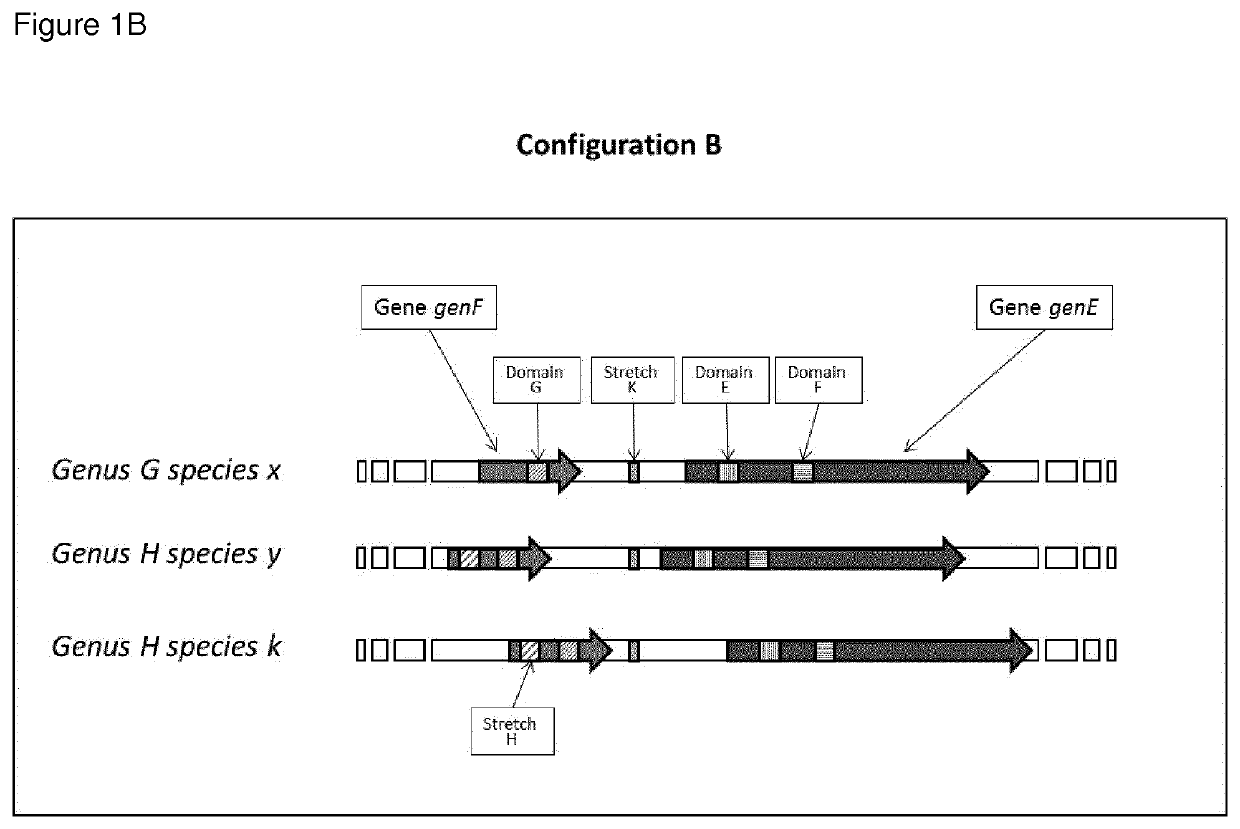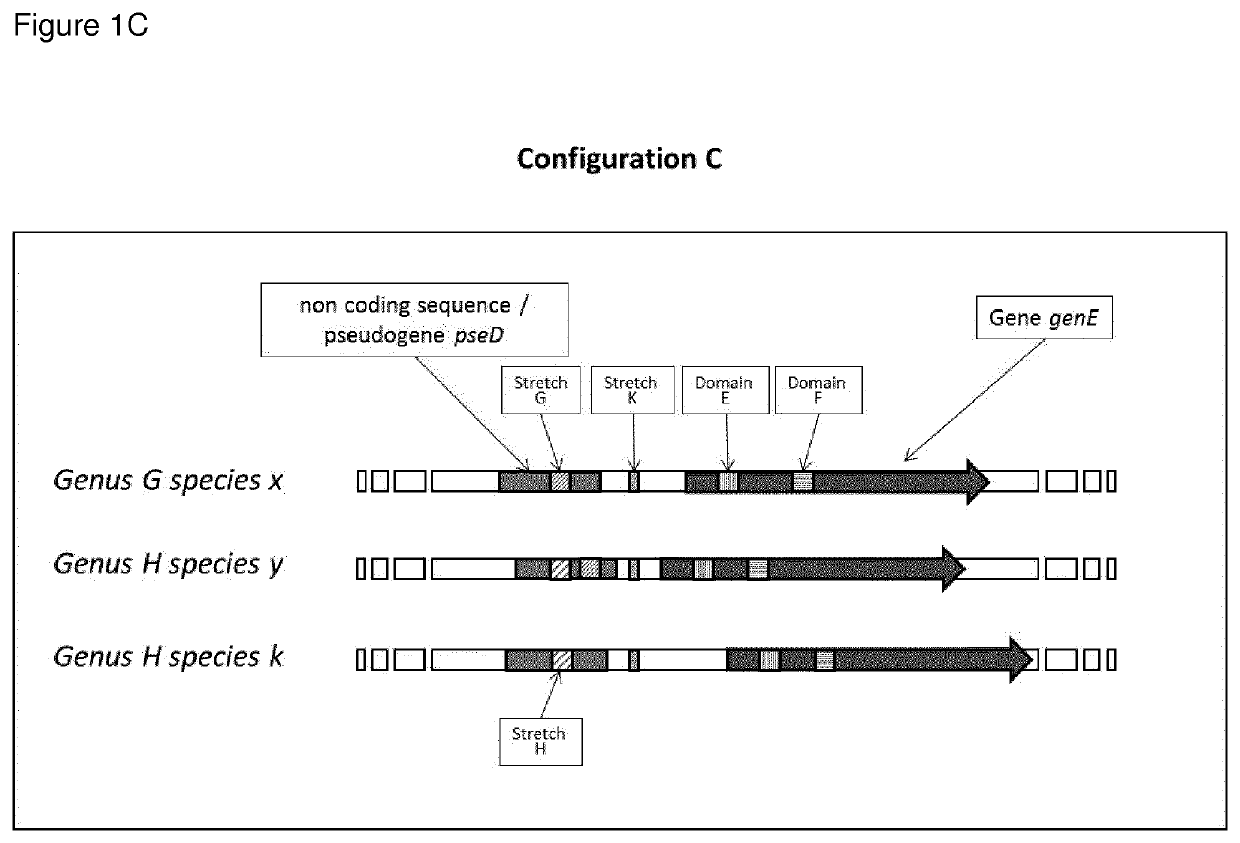Highly polymorphic and modular extragenic (h.p.m.e.) markers within specific taxa of microorganisms and use thereof for their differentiation, identification and quantification
a technology of extragenic markers and microorganisms, applied in the field of nucleic acid based methods, can solve the problems of limited intraspecific typing and achieve the effect of more specificity
- Summary
- Abstract
- Description
- Claims
- Application Information
AI Technical Summary
Benefits of technology
Problems solved by technology
Method used
Image
Examples
example 1
Example 1: Sanger Sequencing of the H.P.M.E. Marker, Preferably Represented in the Oenococcus Genus by the H.P.M.E. mleA-mleR Marker, Followed by the Alignment and the Comparison with the Homologous H.P.M.E. mleA-mleR Marker of Oenococcus oeni Oenococcus kitaharae and Oenococcus alcoholitolerans
[0259]One preferred form of the H.P.M.E. marker is represented in the Oenococcus genus by a target sequence comprising: a) the mleA gene coding for Malolactic Enzyme; b) the mleR gene coding for the Malolactic Enzyme Regulator. i.e. a lysR family transcriptional regulator, oriented in opposite direction from the mleA gene on the complementary strand of the DNA; c) the region corresponding to the gene trascriptional promoter that is between the mleA gene and the mleR gene previously described.
[0260]The H.P.M.E. mleA-mleR marker for the species Oenococcus oeni is represented in the preferred form by the sequence of the strain Oenococcus oeni PSU-1 (gi|116490126:1481086-1483687) and for the spe...
example 11
and Quantification of Microorganisms by Quantitative Real-Time PCR (qPCR) Combining Group-Specific TaqMan Probes or Group-Specific Short, Locked Nucleic Acid (LNA) TaqMan Probes and Species-Specific Primers Designed on the H.P.M.E. mleA-mleR Marker and H.P.M.E. Tkt-hrcA Marker and H.P.M.E. hrcA-grpE Marker
[0339]Quantitative real-time qPCR methods have been increasingly used as a rapid and sensitive technique for the detection of microorganisms. With the use of TaqMan® probes, real-time PCR offers an advantage of rapid, sensitive and specific detection of the target microorganisms, while avoiding cross-contamination from other closely related bacteria.
[0340]The TaqMan method depends on a DNA-based probe with a fluorescent reporter at one end and a quencher of fluorescence at opposite end of the probe. The close proximity of the reporter to the quencher prevents emission of its fluorescence, hydrolyzation of the probe by the 5′ to 3′ exonuclease activity of the Taq polymerase releases...
PUM
| Property | Measurement | Unit |
|---|---|---|
| volume | aaaaa | aaaaa |
| length | aaaaa | aaaaa |
| Polymorphic | aaaaa | aaaaa |
Abstract
Description
Claims
Application Information
 Login to View More
Login to View More - R&D
- Intellectual Property
- Life Sciences
- Materials
- Tech Scout
- Unparalleled Data Quality
- Higher Quality Content
- 60% Fewer Hallucinations
Browse by: Latest US Patents, China's latest patents, Technical Efficacy Thesaurus, Application Domain, Technology Topic, Popular Technical Reports.
© 2025 PatSnap. All rights reserved.Legal|Privacy policy|Modern Slavery Act Transparency Statement|Sitemap|About US| Contact US: help@patsnap.com



